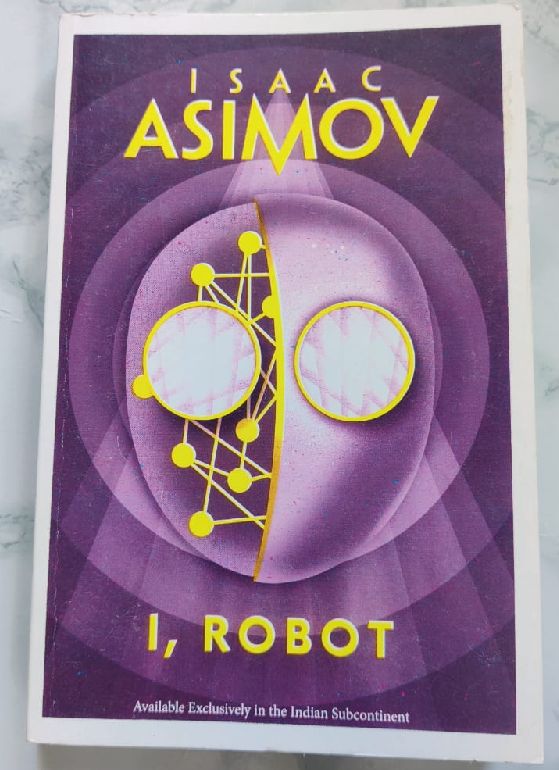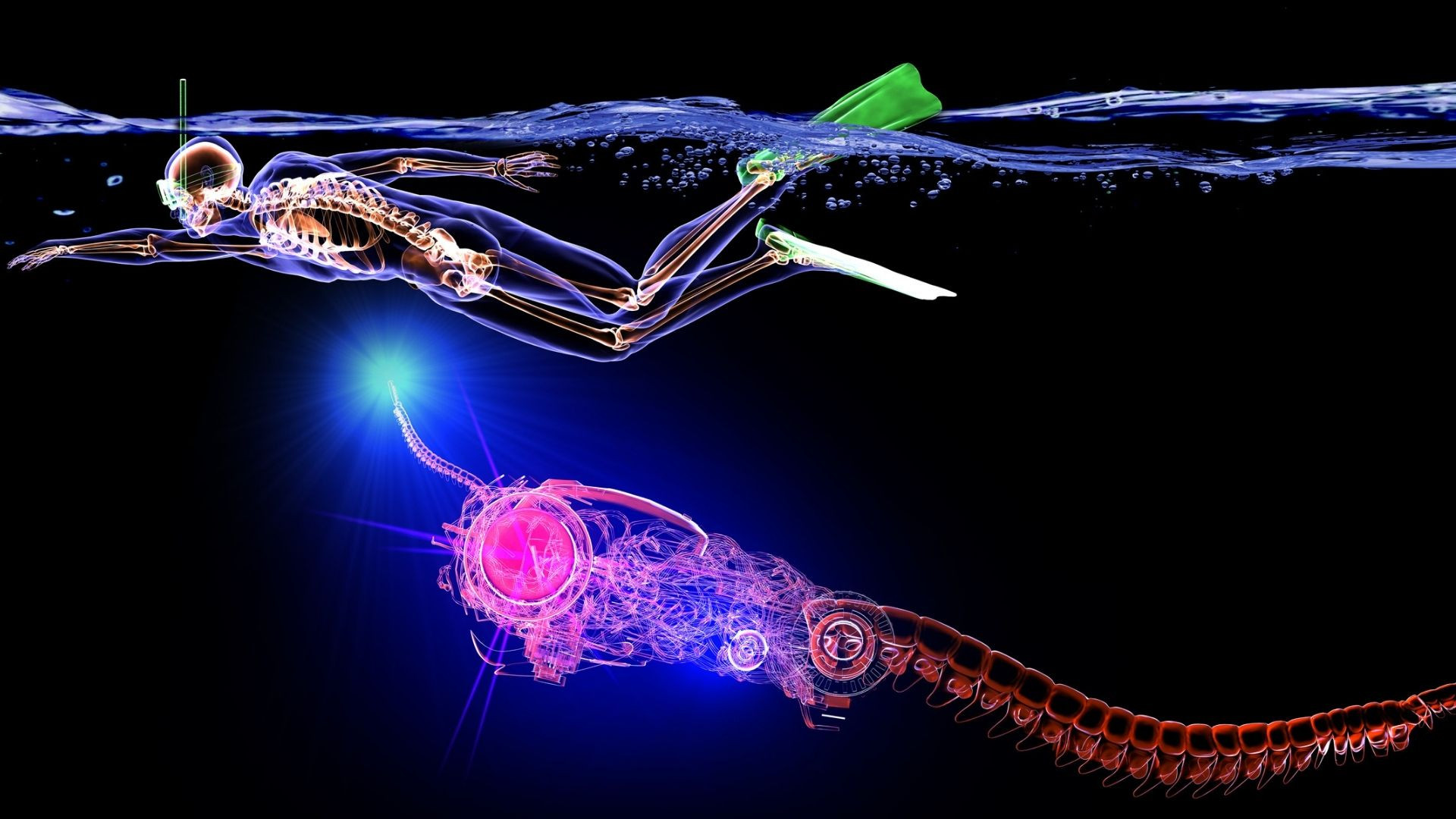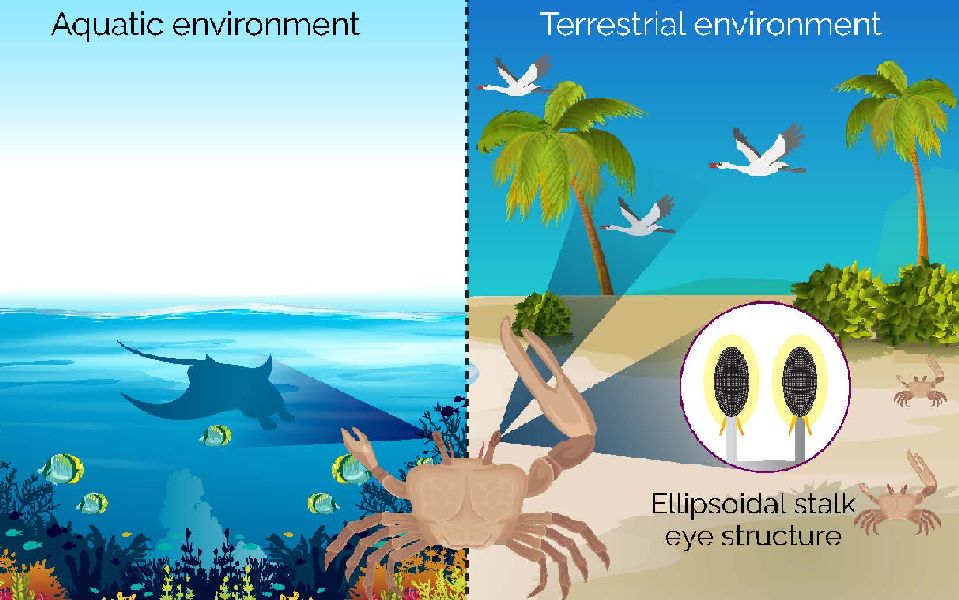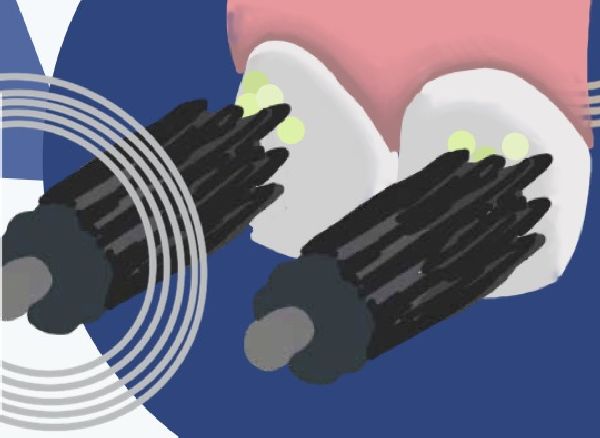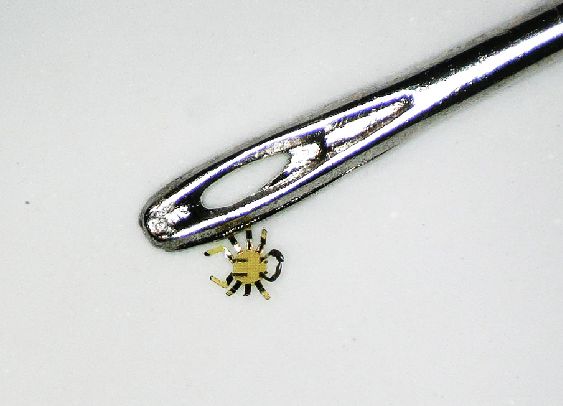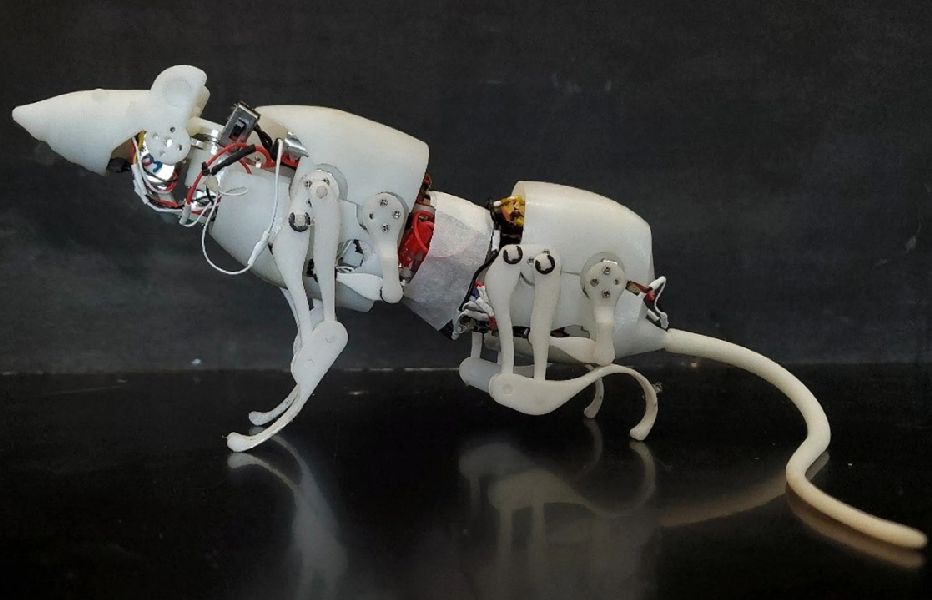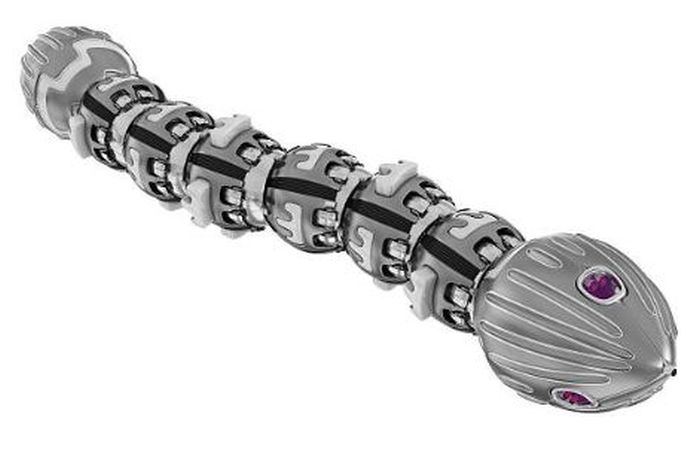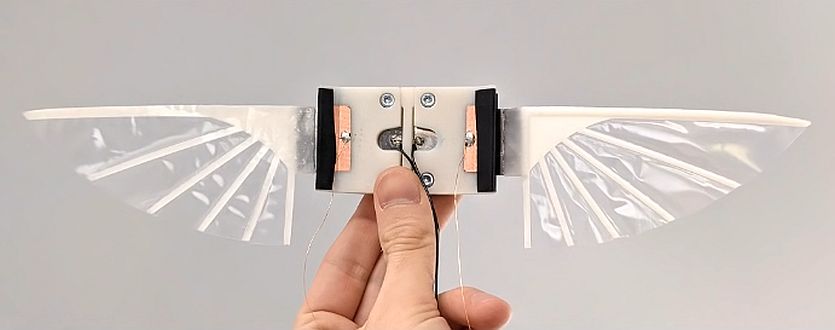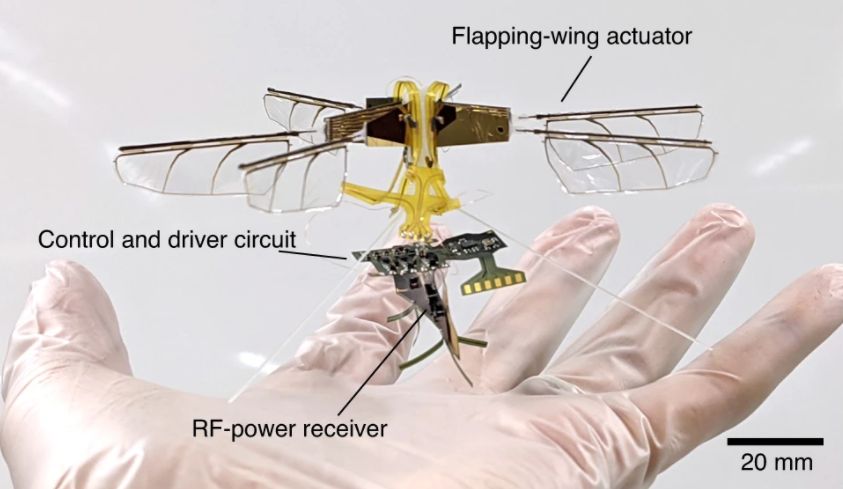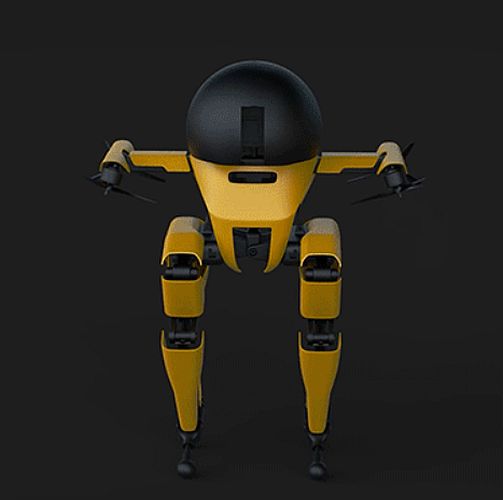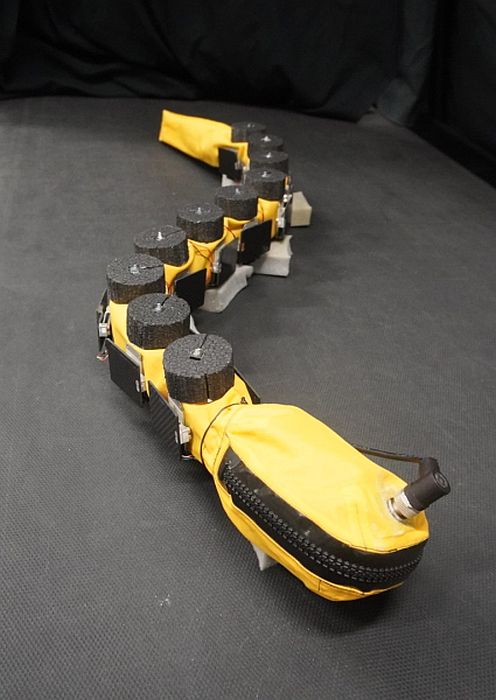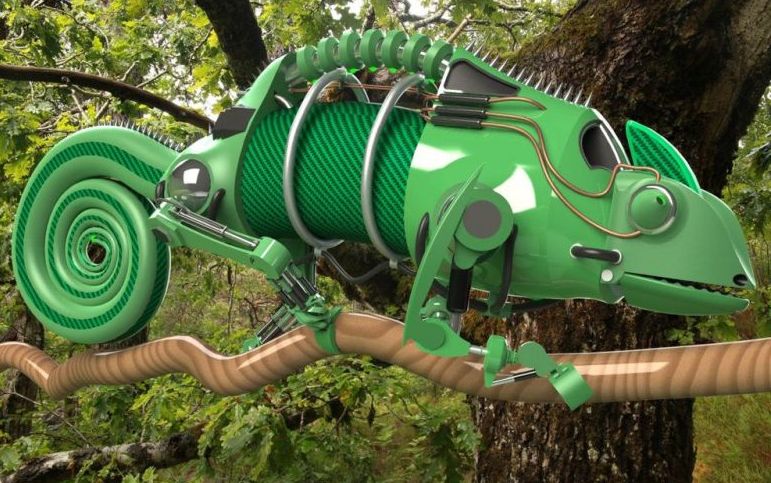I, Robot by Isaac Asimov is a collection of short stories written between 1940 and 1950 and were composed together in 1950. To create an ethical system for the co-existence of humans and machines, Asimov, laid the foundation of the three laws of robotics, which were:
Read MoreTag: robotics
Butterfly Robots with Bistable Wings: Biomimicry
In an effort to create faster and more energy-efficient soft robots, researchers at North Carolina State University have created a prototype of swimming soft robots based on manta rays. The team got inspired from the biomechanics of the marine animal. Rate of swimming for most of the (swimming) soft robot is one body length per second, manta rays, however, glide at much faster rate. Their swimming efficiency triggered the scientists to look into the potentiality of creating a similar robot, biomechanically.
Read MoreCrab Inspired all weather Vision System: Biomimicry
To improve the imaging component in robotics, researchers have been trying to create various types of highly performing cameras, sensors and artificial vision systems. Most of the vision systems are bio-inspired that is, they have been emulated from the systems and elements of nature including humans, animals, insects and fish. These systems, however, have their own restrictions because they operate in limited environment respectively. For instance, majority of (bio-inspired) existing sensors and cameras works either one of the following scenarios: on the ground like biomimetic eye with a hemispherical…
Read MoreShapeshifting Nanobots to Brush and Floss Teeth: Toothbrushing Microbots
Toothbrush, or the heads per say, have not much evolved since ages, from rectangular they have only graduated to diamond shaped geometry. I really doubt how far does the new shape has been able to reach the teeth in the back. In the dental hygiene sequence floss, brush and rinse go hand in hand. And each step is an important and at times, cumbersome task especially for people with disabilities. Researchers at the University of Pennsylvania have put in an effort to combine these three steps in one with the…
Read MoreNew Microbot Scuttle like a Crab: Biomimicry
Engineers at Northwestern University have developed nano-scale robots that scuttle like small peekytoe crab. The tiny crab-bots measure around half-millimeter wide. Like the decapod crustaceans, the bot can bend, twist, crawl, walk, turn and even jump. Not only the nano crab like devices, engineers have also created same sized robotic inchworms, crickets and beetles. Researchers envision that their technology will explore practical tasks inside tightly confined spaces.
Read MoreSQuRO, Quadruped Robotic Rat: Biomimicry
Nature has always inspired robotics engineers to design bots with the same agility and efficiency. And this is also one of the reasons why researchers look up to biomimicry to solve human design challenges. When it comes to navigate tight and congested arenas wouldn’t rodents be the best options to design a device? Researchers at Beijing Institute of Technology (BIT) thought the same. According to Qing Shi, a Professor at BIT, legged robots have limitations when operating in narrow spaces. Micro quadruped robots too can face performance issues due to…
Read MoreMagnetic Tentacle Robot for Autonomous Endoscopy: Soft Catheters
Magnetic tentacle robot, strange it may sound but researchers at STORM Lab at the University of Leeds have come up with a tiny canular form of robot that can explore the smallest bronchial tubes in the lungs. The nano tubiform bot measures around 2 millimetres in diameter. That happens to be two times the size of the tip of a ballpoint pen. The tentacle robot will be guided from the outside with the help of (external) magnets.
Read MoreInsect sized Flying Robot with Flapping Wings: Micro air Vehicle
Researchers at the University of Bristol, U.K. have fabricated a flapping-wing microrobot that can produce more power than a similar-sized insect. The micro-air vehicle is a product of biomimicry, inspired from bees and other flying insects.
Read MoreWireless RF Powered Insect Scale Aerial Vehicle: Miniature UAV
Researchers at Toyota Central R&D Labs have developed a wireless radiofrequency power based tiny aerial robot.
Read MoreBiomimicry: LEONARDO, the Bipedal Robot can Walk and Fly
Nature not only inspire poets, artists, painters but also engineers. In an attempt to simulate the locomotion of birds, researchers at Caltech have developed a bipedal robot that has a movement that is between walking and flying.
Read MoreInterview: Dr. Guido de Croon, Professor at Delft University of Technology Netherlands
Dr. Guido de Croon is a Full Professor at Delft University of Technology Netherlands. Dr. Croon’s research interests focus on the bio-inspired robotics, micro air vehicles, vision-based navigation and swarm robotics.
Read MoreSwimming is Dynamics of Two Nervous System: AgnathaX
Starting in the early 1900s, one of the problems that baffled neuroscientists worldwide was the role of central and peripheral nervous systems in swimming locomotion. In other words, how swimming locomotion is generated and how vertebrates synchronize the rhythm that is required for the locomotion.
Read MoreChameleon Inspired Next-Generation Artificial Camouflage: Biomimicry
To depict natural camouflage characteristics via artificial camouflage at device level has remained a challenge since decades. However, researchers at Seoul National University have developed an artificial camouflage that can adapt and blend with its surroundings. A defense strategy as seen in the case of chameleon that changes its appearance to avoid predators.
Read MoreInterview: Dr. Song Chaoyang, Assistant Professor at Southern University of Science and Technology China
Dr. Song Chaoyang is an Assistant Professor, Southern University of Science and Technology (SUSTech) China. His Bionic Design + Learning Lab conducts research in Bionic Design, Robot Learning and Design Science. His team’s vision is to create advanced robotic systems that are sustainable and intelligent.
Read MoreInterview: Dr Dylan Drotman, Robotics Engineer at University of California San Diego
It’s our honor to have Dr Dylan Drotman from University of California San Diego with us today. Dr Drotman’s research interests focus on the design, modeling, fabrication, and actuation of physically soft robots that are powered by air or water. He obtained his B.S., M.S., and Ph.D. in Mechanical Engineering at University of California San Diego. He has also been a Guest Lecturer in Experimental Robotics, Soft Robotics and Computer Aided Design & Analysis.
Read More
